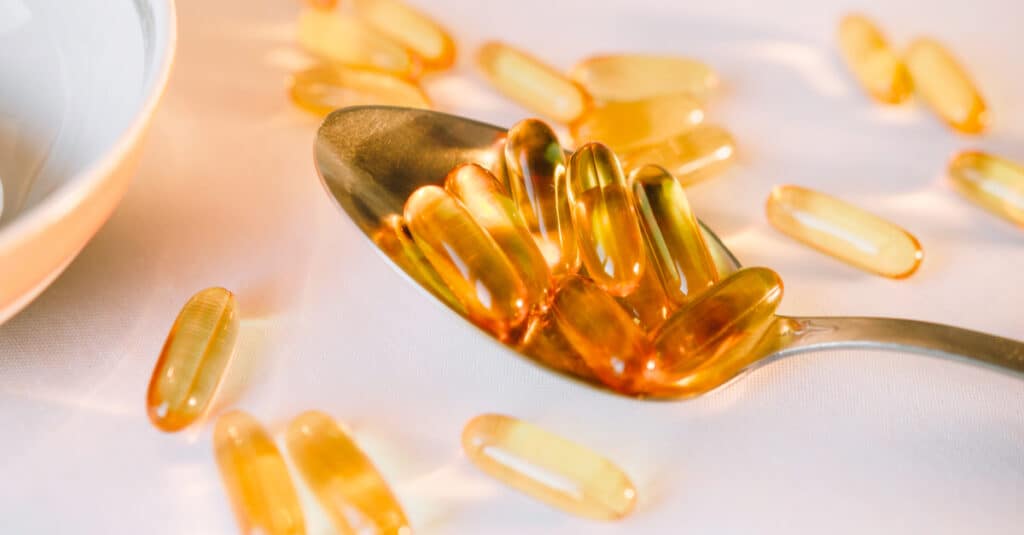If you ever find yourself lost and hungry somewhere around the Arctic Circle, do yourself a favor and skip the Polar Bear. At the very least, don’t take a bite into it’s liver. Although this organ is quite edible in many other animals, consuming even a small amount of a Polar Bear’s liver is incredibly toxic for human beings.
The reason for this is because of the Polar Bear’s diet itself. A polar bear’s diet consists almost exclusively of other mammals and fish. More specifically speaking, seals, porpoises, small whales, and fatty sea fish. All of these types of animals are very high in body fat and have thick layers of blubber and fat. This is to insulate themselves against the frigid arctic waters that they live in. This type of fat produces a chemical known as retinol.
Because Polar bears consume so much of this type of fat, they end up storing excess retinol in their livers. A Polar Bear’s liver acts as a mega-storehouse for this type of chemical. The substance is stored at such high concentrations that it becomes incredibly toxic — including for humans. When someone is overdosing on retinol, it induces a condition known as Hypervitaminosis A.
What Is Retinol?
You might be surprised to hear that retinol isn’t some kind of exotic substance that doesn’t belong in the body. On the contrary, retinol is simply a form of Vitamin A, a substance that your body actually needs to survive and perform day-to-day tasks. Retinol shows up quite often in cosmetics and is even utilized in cosmetic plastic surgery operations. This is due to vitamin A’s beneficial effect on the skin (at controlled doses).
However, like many substances your body needs, retinol can become highly toxic at high doses. In the case of a Polar Bear’s liver, the dose of retinol that you receive is many times higher than what is safe to consume. In fact, it is probably the highest concentration of this chemical to be found in the animal kingdom.

Vitamin A is commonly taken as a supplement.
©Bondar Ann/Shutterstock.com
How Does Retinol Get Stored in a Polar Bear’s Liver?
Polar Bears depend on consuming high levels of fat to survive in the frigid arctic environments in which they dwell. Because of this, these animals are exclusively meat-eaters and consume high amounts of sea life. Their preferred meal is a blubber-rich seal or whale.
These aquatic prey animals that polar bears eat are themselves high in Vitamin A and retinol. For example, a common dietary supplement that people consume to receive a safe amount of Vitamin A is cod liver oil.
Because excess Vitamin A is stored as a wasted chemical in the liver, a Polar Bear’s liver is chock full of the stuff. It’s stored over the course of a lifetime of consuming other animals that are rich in retinol.
How Many People Could One Polar Bear Liver Kill?
The amount of Polar Bear liver one needs to consume to induce Hypervitaminosis A is quite small. In fact, just one-tenth of a gram of Polar Bear liver has enough Vitamin A in it to meet the recommended daily amount for a full-grown adult.
One entire Polar Bear’s liver has enough retinol in it to kill 52 full-grown people. That’s a pretty dangerous body organ! If you spread out consuming one Polar Bear liver slowly by consuming the amount that would fulfill your daily requirements of Vitamin A, one single liver would last you 143 years.
The indigenous peoples of the Arctic learned quite a long time ago not to consume the liver of a Polar Bear. This was the case even when the rest of the animal was eaten or utilized. Early Arctic explorers also quickly learned to avoid consuming this part of the animal’s body. Many explorers learned the hard way about this through deadly consequences.

Polar Bears consume a diet high in retinol.
©critterbiz/Shutterstock.com
Symptoms of Hypervitimatosis
The symptoms of Hypervitaminosis A are fairly wide-ranging. Much of that has to do with the amount that one has gone over the safe limit for consuming retinol. However, some of the common symptoms include dizziness, headache, blurry vision, vomiting, skin peeling and itching, skin and hair changes, bone pain, liver and kidney damage, and, in extreme cases, possible death.
There are two different kinds of Hypervitaminosis: acute and chronic. In the case of digesting an entire polar bear liver, one would experience acute Hypervitaminosis.
Other Animals With High Stores of Retinol
Although Polar Bear livers have the highest source of retinol, other animals have livers that are very saturated with this potent chemical. Some of the examples include Walrus, Bearded Seals, Moose, and certain types of fish. Even taking more than the daily prescribed amount of certain supplements can make one sick from overdosing on retinol. However, this would likely not result in serious illness or death.
Thank you for reading! Have some feedback for us? Contact the AZ Animals editorial team.








